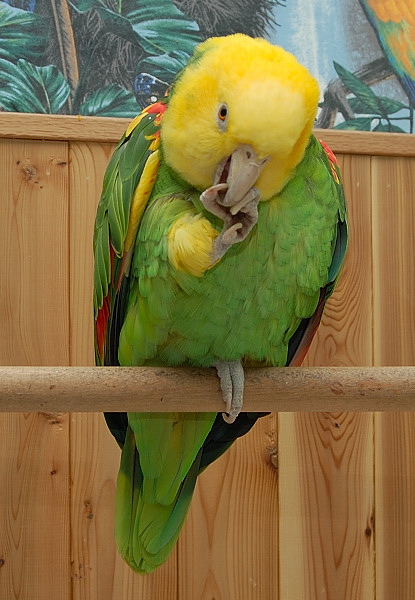| Home About UsOur AviaryHatcheryThe Nest Contact Us |
 |
| Our Aviary |
| Umbrella | Moluccan | Goffin | Major Mitchell's | African Grey | Amazon | Blue and Gold | Scarlet | Galah | Greater Sulphur-crested | Eleonora |
|
Even the most well cared for Blue-and-Gold Macaw will "scream" and make other loud noises, nonetheless, it is possible to make them silent. Loud vocalizations, especially "flock calls", and destructive chewing are natural parts of their behavior and should be expected in captivity. To some extent you can redirect chewing to toys, but a macaw left alone, uncaged in a room will likely redecorate. By providing a number of toys in cage, one can minimize the destructive chewing as the bird will focus chewing on those appropriate objects. They require a varied diet, a seed only diet will lead to health problems such as vitamin deficiency. An example of a good diet would be a quality pelleted mix, in conjunction with a mix featuring seed, nuts, and dried fruits, with fresh vegetables and fruits fed regularly; furthermore, it is quite common (and appreciated by the parrot) to partake with their human owners of safe foods like pasta, bread, etc. It is important to avoid foods with high fat content (generally) while striving to provide a wide variety of foods. |
All photos are copyrighted by pretty-parrots.com and/or its contributing photographers and may not be reproduced or exploited in any fashion without permission from pretty-parrots.com. Where specific permission for media use has been given, please use the appropriate credit. |











